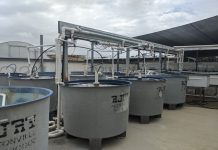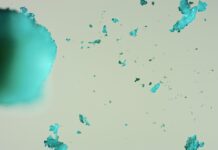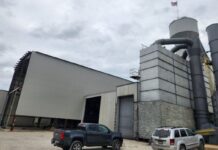
A team of researchers at Monash University has developed a new type of water filtration membrane that removes small per- and polyfluoroalkyl substances (PFAS), marking a significant advancement in tackling persistent chemical contamination.
The newly designed filter uses a beta-cyclodextrin (?CD) modified graphene oxide membrane (GO-?CD) with nanoscale channels that can selectively trap PFAS molecules while allowing water to pass through, Monash said in a news release.
Unlike conventional polyamide membranes, which typically remove only about 35 per cent of short-chain PFAS, the Monash filter was shown in tests to significantly outperform existing technologies.
PFAS, often referred to as “forever chemicals,” are used in a wide range of industrial and consumer products, and are known for their persistence in the environment.
Their presence in Australia’s waterways and drinking supplies has become a growing concern, prompting a Federal inquiry into the extent of PFAS use and its impact across the country.
According to the research team, the Monash membrane forms an energetic barrier that effectively prevents PFAS from moving through the filter, even under varying temperatures, while maintaining efficient water flow.
Eubert Mahofa, Monash PhD candidate and lead author of the study, said the technology offers a solution to a long-standing challenge in water treatment.
“PFAS are difficult to manage because they dissolve easily in water and can spread far from their original source, making contamination challenging to contain and remediate,” Mahofa said.
“Our approach solves this by filtering out and concentrating these harmful chemicals while still allowing water to flow through efficiently.”
Dr Sally El Meragawi, co-researcher on the project, said the membrane’s design could have broad applications in global water treatment systems.
“By combining advanced materials with smart chemistry, we’ve created a highly efficient way to tackle this global contamination issue,” Dr El Meragawi said.
“It also retains key nutrients in water, making it an attractive method for use alongside traditional nanofiltration systems.”
The membrane was developed using shear alignment printing, a scalable technique that allows for the industrial production of graphene oxide films.
The study and its findings are part of ongoing work at the Australian Research Council’s Research Hub for Advanced Manufacturing with 2D Materials (AM2D), based at Monash University.
Professor Mainak Majumder, Director of AM2D, said the technology could have far-reaching benefits for environmental protection and industry.
“This breakthrough in PFAS filtration has the potential to revolutionise how PFAS contamination is managed globally, with applications ranging from landfill leachate treatment to industrial wastewater purification,” Professor Majumder said.
The development was made possible through a collaboration between Monash University, Clean TeQ Water, and its graphene-focused subsidiary NematiQ.
Peter Voigt, CEO of Clean TeQ Water and NematiQ, welcomed the innovation and its future commercial potential.
“The development of a modified graphene membrane for PFAS removal represents an exciting advancement in water treatment. NematiQ looks forward to collaborating closely with Monash University to bring this innovative technology to market,” Voigt said.
Professor Majumder added that partnerships such as this play a crucial role in translating laboratory research into practical environmental solutions.
The full research findings are published in ACS Nano. DOI: https://doi.org/10.1021/acsnano.4c15413




















